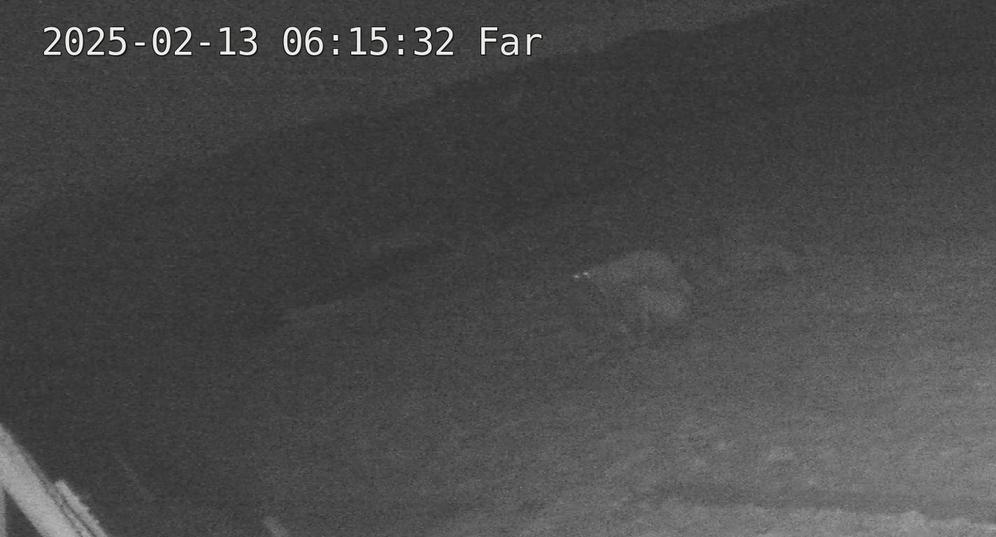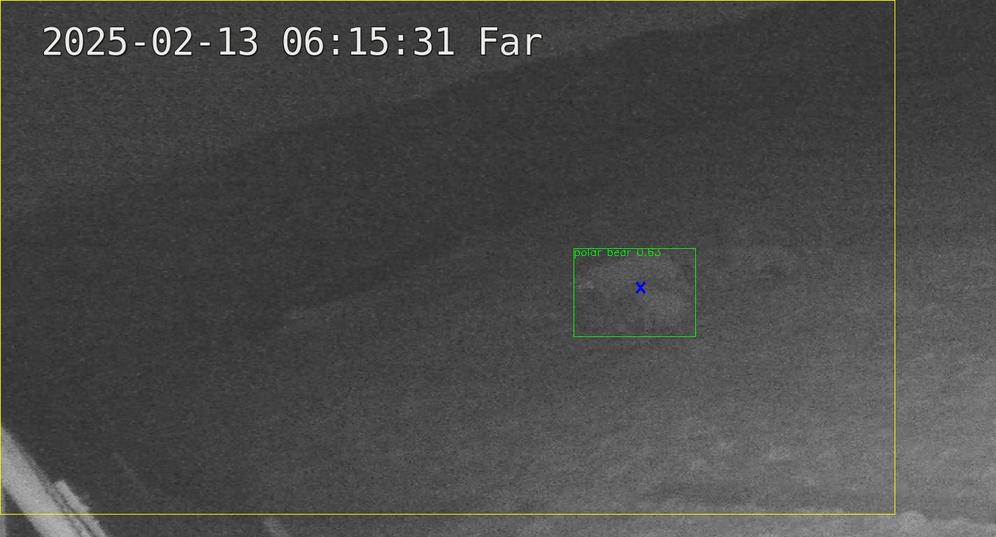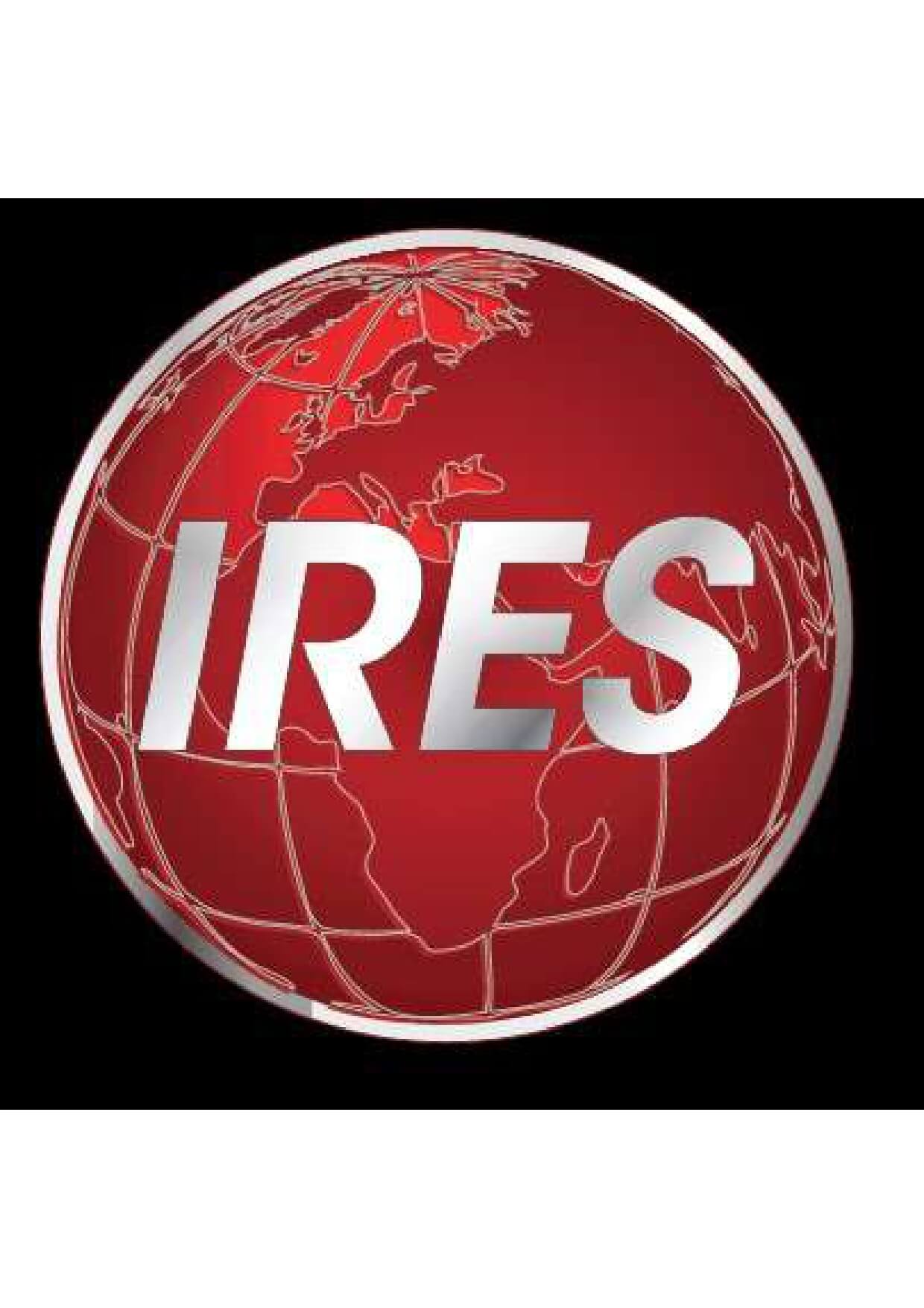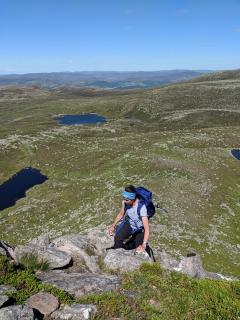About the Group
The number one problem in nature conservation is the need for more money or access to funding. This group aims to help all WILDLABS community members with funding and financing their projects by creating a space to learn about different funding opportunities, income models and business models, improve grant applications, discover venture capital investment projects, find collaborators for funding, finance and business opportunities, and more.
What the Group Offers
The group offers a space to:
- Ask questions and discuss finding and applying for Funding and Finance
- Brainstorm about Funding and Finance wishlists for types of instruments, eligibility criteria, thematic and geographic priorities
- Publish and be alerted to opportunities
- Publish support resources like grant-writing courses, grant-finding databases, consultant-influencers blogs/Medium/LinkedIn, business development, and project planning courses
- Review and comment on opportunities
- Ask for and provide peer feedback on draft applications
- Learn about funding and finance providers’ views and practices
- Learn about business models for companies and income models for NGOs
- Find collaborators or mentors
- Learn about and attend virtual series and events with live discussions relating to funding and finance information and training
- Identify and facilitate opportunities where WILDLABS community members can collaborate on project applications to increase likelihood of success and impact
- Share fundraising collaboration opportunities, events and resources
- Consultation meetings to discuss collaboration plans, aims or ideas, income and business models
Interested in funding opportunities? Check out the WILDLABS resources page and filter for “Funding Opportunity.”
Resources
Header image credit: Jitu Mondal
Group curators
- @Frank_van_der_Most
- | He, him
RubberBootsData
Field data app developer, with an interest in funding and finance





- 54 Resources
- 177 Discussions
- 9 Groups
- @HRees
- | Him/His
WILDLABS & Fauna & Flora
WILDLABS - Programme Development Manager, keen interest in bats, hyenas and tech!





- 13 Resources
- 3 Discussions
- 6 Groups
- @Aurel
- | She/Her
Looking to reconcile biodiversity conservation and finance.

- 0 Resources
- 0 Discussions
- 10 Groups
- @ahmedjunaid
- | He/His
Zoologist, Ecologist, Herpetologist, Conservation Biologist





- 63 Resources
- 7 Discussions
- 26 Groups
La Trobe University
Zoologist & Conservation biologist
- 0 Resources
- 1 Discussions
- 5 Groups
- @jsulloa
- | He/Him
Instituto Humboldt & Red Ecoacústica Colombiana
Scientist and engineer developing smart tools for ecology and biodiversity conservation.



- 3 Resources
- 22 Discussions
- 7 Groups
Spatial ecologist focused on landscape ecology and spatial modeling of biodiversity

- 0 Resources
- 0 Discussions
- 4 Groups
- @HeinrichS
- | he/him
Conservation tech geek, custodian (some say owner) and passionate protector of African wildlife, business systems analyst.





- 0 Resources
- 29 Discussions
- 6 Groups
- @StephODonnell
- | She / Her



- 193 Resources
- 676 Discussions
- 32 Groups
I am a conservation technology advisor with New Zealand's Department of Conservation. I have experience in developing remote monitoring tech, sensors, remote comms and data management.
- 0 Resources
- 0 Discussions
- 15 Groups
- @erinconnolly
- | She/her
University College London (UCL)
PhD Student at UCL's People and Nature Lab. Studying human-livestock-wildlife coexistence in the Greater Maasai Mara Ecosystem, Kenya.
- 0 Resources
- 0 Discussions
- 8 Groups
- @KellyFaller
- | she/her/hers
Rutgers University
Lead Estuary Science Coordinator at the Partnership for the Delaware Estuary and Masters Student at Rutgers University in the Department of Ecology and Evolution. Using bioacoustics in tidal marsh ecosystems for restoration and conservation.

- 0 Resources
- 3 Discussions
- 14 Groups
- @HRees
- | Him/His
WILDLABS & Fauna & Flora
WILDLABS - Programme Development Manager, keen interest in bats, hyenas and tech!





- 13 Resources
- 3 Discussions
- 6 Groups
Over 35 years of experience in biodiversity conservation worldwide, largely focused on forests, rewilding and conservation technology. I run my own business assisting nonprofits and agencies in the conservation community



- 5 Resources
- 62 Discussions
- 12 Groups
Chief Marketing Officer 🌎 Building Transparency through Data & Storytelling

- 2 Resources
- 3 Discussions
- 8 Groups
The Fonseca Species Conservation Fund supports early career conservationists working on projects regarding threatened amphibians, freshwater fish, primates, small mammals, tortoises and freshwater turtles 'in urgent...
29 May 2024
National Conservation Trust Fund of Jamaica opens a call for proposals regarding protected areas and other areas of high environmental importance.
26 May 2024
The IEF's Elephant Conservation and Research Funding Support Program has opened a call for applications. Average grant size is $15K, whereas the IEF funds 20 to 25 projects per year.
22 May 2024
Save Our Seas (SOS) opened a call for small grants for 'original and innovative start-up projects' concerning marine chondrichthyan species (sharks, rays, skates, sawfishes and chimaeras). Projects can be in research,...
19 May 2024
The GSMA ClimateTech programme is seeking partner research consultant/s for a new project exploring mobile and digital technologies for the blue economy in low- and middle-income countries.
19 May 2024
Funding
The UK government's 'Reversing Environmental Degradation in Africa and Asia' program opened a call for applications for "locally led, multi-locational, research-to-action for restoration programmes".
19 May 2024
The Biodiversity Finance Initiative ( BIOFIN, a UNDP initiative ) launched a database with over 330 public and private funding opportunities.
4 May 2024
€2,000 travel grants are available for researchers interested in insect monitoring using automated cameras and computer vision
3 May 2024
PTES will be accepting new applications for Conservation Insight Grants in 2024. The deadline for applications is Sunday 25th August at 23.59 (UK time). Applications will be assessed at a meeting in mid-October and...
22 April 2024
Funding
Call for applications is now open for applications from Asia and the Pacific.
16 April 2024
A grant of $150,000 will be awarded to one successful applicant with a proposal that's strongly linked to biodiversity and conservation. The grant will support a research project or programme for up to three years (...
2 April 2024
The Lonely Hearts Club Challenge is a $1 million commitment and open funding call for early-stage organizations and solutions focused on fostering meaningful social connection, teen belonging, and wellbeing in a tech-...
13 March 2024
February 2025
event
January 2025
event
December 2024
| Description | Activity | Replies | Groups | Updated |
|---|---|---|---|---|
| I very much agree. It is a shame that companies/organisations are willing to spend so much to take from the earth and so little to give back. In the example I come from, we are a... |
+28
|
Community Base, Funding and Finance | 6 days 14 hours ago | |
| Hej all, I updated my question to include discussion about the tariffs as well. |
|
Community Base, Funding and Finance | 3 weeks 2 days ago | |
| I have posted about this in a different group, but I love boosting the impact of my communication through use of visuals. Free graphics relating to conservation technology... |
|
Geospatial, Climate Change, Community Base, Connectivity, Funding and Finance, Open Source Solutions | 3 weeks 3 days ago | |
| Great dear Travis,This is a great news and an opportunity to me and my local bee keepers. It really sounds very helpful.Here is my contacts:Email: muganyizi@pales.or.tz ... |
|
Climate Change, Conservation Tech Training and Education, East Africa Community, Funding and Finance, Human-Wildlife Conflict, Wildlife Crime | 1 month 2 weeks ago | |
| Reposting the original post from the GOSH Community:Cool news from the mothbox team! We still don’t have any funding, but our next big goal... |
|
Open Source Solutions, Emerging Tech, Funding and Finance | 1 month 2 weeks ago | |
| Hi Ryan, hmm, I had no idea there was a microphone named that. I thought about how it’s used to lure birds for netting, and I like Greek Mythology. I thought it was a perfect fit... |
|
Acoustics, Emerging Tech, Funding and Finance, Protected Area Management Tools, Software Development | 1 month 2 weeks ago | |
| All sound, would be nice if there were only 5, though! |
|
AI for Conservation, Citizen Science, Data management and processing tools, Emerging Tech, Ethics of Conservation Tech, Funding and Finance, Geospatial, Open Source Solutions, Software Development | 1 month 4 weeks ago | |
| It's great to see so much interest in presenting at this webinar. We have also received interest through direct messages and meetings that we've happened to have had. Thank you... |
|
Open Source Solutions, Community Base, Funding and Finance | 2 months 2 weeks ago | |
| Hi Kim, Thank you so much for taking the time to share your thoughts. I understand your desire for concrete evidence, and that's precisely what we're working towards.... |
|
Funding and Finance | 3 months ago | |
| Love it! I have a few ideas. |
+15
|
Conservation Tech Training and Education, Funding and Finance, Human-Wildlife Conflict | 3 months 1 week ago | |
| Hi all,this may be a bit on the fringes of the WildLabs conservation tech but Mossy Earth is opening an innovation grant supporting tests... |
|
Funding and Finance | 4 months ago | |
| Thank you for elaborating Vance. I think I know of the revolving loan funds as micro credit systems.Interesting point, about the time it takes to set up and build trust. But I... |
|
Funding and Finance | 5 months 3 weeks ago |
Nature Conservation Crowdfunding Platforms
19 February 2025 11:14pm
Unlocking Hundreds of Billions Annually for Nature—at No Cost
10 February 2025 8:42pm
18 February 2025 7:21am
Hi Damian, maybe I'm thick or something, but I still have no idea what you are offering. There are a lot of big numbers thrown around but I'm sure you are able to explain much more clearly what it is you are offering. Can you not just explain in really simple language what you do, where you get your cut from, what you sell, what someone has to do to get it and how it will benefit wildlife funding ? To me it feels like there's is some bad side to this that you are not wanting to talk about. My reaction to that is to run in the opposite direction. What works for me is transparency, I'm not seeing that here. And a tip, if you make something seem vague and untransparent then you tend to loose people forever and rightly so I think.
Also you say you have been nominated for the 2025 Earthshot Prize (you have not won a prize), can you please provide a link to some site that is not your own that proves this ?
And todate, how much money has been giving to biodiversity causes through whatever this is and to whom ? A search shows a figure of 17,926 euros of donations from your workers to some charitys. But no evidence of any billions or even hundreds of thousands that I can find.
Here's an approach that I'm sure would work here. Donate a million euros and ask for grant applications for it. Keep it simple and transparent. You don't have to think in terms of billions, even a single one million would work wonders. Above all it would establish credibility. You would get a lot of praise and support if you did that from this crowd I think. What do you think? Keep it short term. Say applications close end of August or something.
18 February 2025 5:28pm
Hi Kim,
Thank you so much for taking the time to share your thoughts.
I understand your desire for concrete evidence, and that's precisely what we're working towards. Please remember that Mandatum is a nascent startup. We successfully completed a private beta and passed the Proof of Concept stage, demonstrating the viability of our core technology. Our focus at this stage is to refine our model and build strategic partnerships to navigate the nature conservation landscape.
The Earthshot Prize nomination serves as validation of our innovative approach and its potential for significant impact, as we have successfully progressed through several stages of the rigorous evaluation process.
Mandatum has the potential to unlock hundreds of billions of dollars annually for nature conservation, aligning perfectly with the goals of this Funding and Finance Group. I am hoping to get some guidance and support from this community to accelerate our development and bring this groundbreaking solution to fruition to resolve "the number one problem in nature conservation."
I am eager to connect with individuals genuinely interested in exploring innovative solutions to the funding crisis in nature conservation. If you'd like to learn more about Mandatum and discuss the project in more detail, please DM me. I believe your expertise, or that of any member of the group, would be invaluable in guiding our project towards success.
Cheers!!!
MargoTV - new wildlife tech youtube series and subsidized conservation products!
9 January 2025 12:17am
12 February 2025 7:28pm
That’s great! Definitely interested!
Think in terms of 10W continuously.
13 February 2025 7:43am
I'm looking forward to the cool Margo TV we are going to see when we get some AI bear monitoring going in Canada with Margo supplies :) That's going to be awesome.
Here is an image of a bear from last night in the Scandinavian zoo in Denmark. The system triggered on the bear even though it is very dark and this is a digital zoom on a wide angle fixed camera. Despite being very fuzzy we are able to get triggers on these ones due to the use of multiple mitigation techniques so we get long distance, high sensitivity and low false positives. This one for example was checked with multiple successive frames and multiple AI models before calling it a bear.
This is without thermal. But with added thermal and models trained on thermal images the heat signature will effectively be taken up in the model I'm expecting. This would mean that in effect you can tolerate a lower confidence level but it would after all be a living thing as well.
This trigger event for this event was even less clear, but you can still just make out two eyes, and bear in mind (excuse the pun), the actual view from this camera is even wider and the bear further away in a sense as this is a dynamic zoom.
13 February 2025 7:49pm
Love it! I have a few ideas.
🌍 explorer.land Beginners Webinar: Create your first project and funding opportunity
6 February 2025 1:05pm
Award, Fellowship and Grant Opportunities Compiled by ther Society for Conservation Biology.
3 February 2025 4:18pm
The Minor Foundation for Major Challenges calls for "new and unexpected ways of communicating the need for transitioning to a low-carbon economy"
29 January 2025 9:23pm
National Conservation Trust Fund of Jamaica call for proposals (JM$500K-5M)
29 January 2025 9:07pm
CEPF 9th call for LOIs for large grants (>$50K) Aplicar en inglés o español
29 January 2025 8:51pm
Software Developer - Key Conservation
28 January 2025 11:36pm
Funding Options for Environmental Projects: A Comprehensive Guide
26 January 2025 6:39pm
New paper: Approaches for integrating evidence of the effectiveness of actions in conservation funding to inspire more effective practice
24 January 2025 8:05pm
BNP Paribas Foundation (up to €800k)
24 January 2025 7:31pm
John Lewis Partnership Foundation Nature Fund (up to £20k)
24 January 2025 7:08pm
Mossy Earth Innovation grant
16 January 2025 8:20pm
RestorLife Awards ($25k)
16 January 2025 6:17pm
Google.org Accelerator: Generative AI open call ($500k-$2 million)
16 January 2025 4:21pm
Wald Innovation Facility - Innovation for Nature call for concept notes (€750,000– €1.5 million)
16 January 2025 4:13pm
Fonseca Species Conservation Fund (FSCF) - $25k
16 January 2025 3:56pm
Zoological Association of America, Conservation Initiative Grants (≤$5K)
15 January 2025 11:34pm
Catch Up with the WILDLABS Awards 2025 Proposal Powerup
 Frank van der Most
and 2 more
Frank van der Most
and 2 more
13 January 2025 6:12pm
Tanzania Forest Fund opens 2025 call for proposals (TZS 5M-50M or more)
8 January 2025 2:35pm
Horizon scan of AI in nature conservation
18 December 2024 4:42pm
13 January 2025 12:56pm
13 January 2025 1:30pm
On The EDGE's Conservation Grants program opens call (£30K) for early and mid career conservationists and small organizations.
11 December 2024 5:30pm
Tech4Nature Award
26 November 2024 12:14am
ICI Thematic call for projects (€15M-20M) on enhancement of climate resilience while preventing conflict and sustaining peace
25 November 2024 11:29pm
ICI Thematic call for projects (€5M-20M) on wetlands, coastal marine ecosystem services and watershed protection
25 November 2024 11:25pm
ICI Thematic call for projects (€5M-20M) to develop finance and/or business models for climate related topics
25 November 2024 11:11pm
ICI Thematic call 2024 for €5-20M projects
25 November 2024 10:58pm
Conservation Finance: Towards a New Model for Landscape Restoration. New Book
5 November 2024 7:54am
21 November 2024 3:45pm
This is an interesting read, Vance!
Perhaps first a disclaimer. Reading this book was my first serious dive/read/exploration of the topic of nature conservation finance.
One of the most enlightening parts is the circular diagram of the environmental impact bond ( fig. 1.1 in chapter 1 ) because it shows all the typical roles involved, their relations, and the flow of money/value.
For me the eye opener was that there can be many parties involved, which is completely different from the basic grant making model where there are only two parties. This makes the organization of such an instrument quite complicated, and the book mentions, more than once I believe, that this requires the capacity to do so.
The diagram gave me one question, which I could not find answered in the book. As I understand it, the party that receives/consumes the investment ( the service provider ) is not the same as the payor. The payor pays the investors when the actions of the service provider reach a certain measurable threshold of effect ( like an amount of drinking water delivered ). But what happens when that effect is not reached? Will the investor simply loose their money, or will someone else repay their investment?
I found the case studies very illustrative of how such finance instruments can be used for fire protection, water supply, waste water processing and storm flood protection. It should be noticed however, that the cases all take place in California, or the West coast area of the USA and that the payors are governmental agencies or at least organizations working for public service deliveries, which means that in the end tax payers or public service users ( to stay with the drinking water example, the public that pays their water bills ) pay the investment. These two factors mean that there is a reasonable supply of money to the payor to repay the debt and thus a relatively low risk to the investors. Right?
If I got this more or less right then to me the value of the book is that it shows how conservation finance can work in an economically developed country for conservation causes that have a clear and direct impact on the citizens.
25 November 2024 2:27pm
Thanks for the kind and insightful words, Frank. You're right that most examples are from California or the West, showing how these mechanisms may work in the developing world. Impact finance bonds were originally conceived in the UK social sector. There are several examples we don't mention, and probably should, from the developing south of finance tools that have largely been applied to community development. Revolving loan funds (Mohammad Yunus is the most prominent example) have been used for decades to spur small business development with small loans to get businesses kickstarted in difficult economic settings. There are several instances of parametric insurance set up in developing countries; the Yucatan hurricane scheme set up by Swiss Re and the Nature Conservancy is probably the best known.
Good question about impact finance bonds and outcomes not being reached. Although I don't know of any examples, I would assume that the investors are not paid. This isn't unlike any investment in that the risk of not receiving a return is always there.
The multi-part aspect of these approaches does have its pluses/minuses. On the one hand, it should create a collaborative finance culture that promotes cooperation rather than competition for limited funding resources. On the other hand, this means, like any collaborative, that it will take a while to set up, build trust, and get operational. This also means bespoke solutions for most settings, which can or will limit scaling.
Again, thanks for taking the time to read the book. Appreciate your feedback and questions!
25 November 2024 3:07pm
Thank you for elaborating Vance. I think I know of the revolving loan funds as micro credit systems.
Interesting point, about the time it takes to set up and build trust. But I guess that once it is set up in a geographical area and starts repaying the investors, setting up another application with just one new actor might go a lot faster. There must be a word for it in economics, but I don't now it. It's not scaling up but using existing momentum.














































17 February 2025 5:00pm
Hi Jared,
Thank you so much for your feedback! I appreciate you taking the time to share your thoughts. My message needs refining so please let me try to elaborate for the group, and feel free to DM me if you want to discuss it further:
The challenge:
Philanthropic giving in the USA accounts for $500 billion/annually, 70% comes from everyday people, and only $3 billion goes to Nature Funding The main barriers to giving for Americans are affordability (72%), transparency (65%), and ease of contribution (35%). Thus, B Corp works on transparency, and 1% for the Planet makes it easy for people and merchants. These solutions help but are half measures as philanthropy remains directly correlated to GDP with low single-digit growth despite 90% of Americans wanting to help the Planet.
Mandatum solves the affordability issue for everyday people and merchants to contribute at no extra cost to themselves providing hundreds of billions of new funding annually.
We are in the early stages of development, building a strong foundation based on our initial Proof of Concept, and eager to learn and iterate based on expert feedback. We are open to exploring various models, such as nonprofit/for-profit/free/% fee, with the ultimate goal of maximizing our impact and accelerating the flow of funds toward critical causes.
I hope this group helps me to connect faster to the existing network of actors within the nature conservation community. Your expertise and insights will be invaluable in identifying key partnerships and exploring potential collaborations in the nature conservation landscape.
We are open to questions and discussions.
Thanks again.
Cheers!!!